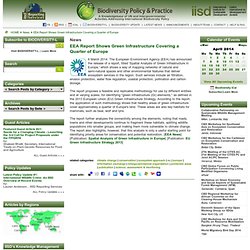

First commercial development of straw houses goes on sale following EU project - Eco-innovation Action Plan. The seven houses are, according to the developers, Modcell and Connolly-Callaghan, “believed to be the world's first commercially available straw eco-homes.”

The construction of the houses was able to go ahead following a rigorous certification process that tested the energy performance, fire safety and weather-resilience of the straw panels. The certification gives the proof of viability of the straw panels that lenders and insurers need to provide mortgages and insurance to buyers of the properties. The straw panels use an environmentally-friendly by-product from the growing of wheat. About 3.8 million tonnes of waste straw is estimated to be produced in the UK each year. To make the panels, the straw is packed into wooden frames so tightly that little air is able to penetrate. According to the developers of the Bristol houses, straw offers several environmental benefits as a construction material. Further information is available at. Coastal Zone Policy - Environment.
Additional tools Announcements The Commission adopted on 12 March 2013 a new initiative on Maritime Spatial Planning and Integrated Coastal Management.

Read more about the proposal here. What is it about? Coastal zones are among the most productive areas in the world, offering a wide variety of valuable habitats and ecosystems services that have always attracted humans and human activities. But this intensive concentration of population and excessive exploitation of natural resources puts enormous pressure on our coastal ecosystems leading to biodiversity loss, habitats destruction, pollution, as well as conflicts between potential uses, and space congestion problems. Coastal zones are also among the most vulnerable areas to climate change and natural hazards. Integrated coastal management covers the full cycle of information collection, planning, decision-making, management and monitoring of implementation. Chinese firm 3D prints ten houses in a day. A Chinese building company has used 3D printers to construct 10 houses in less than 24 hours.

Suzhou-based construction materials firm Winsun used four 10m x 6.6m x 32m printers to spray a mixture of cement and construction waste to build the walls layer by layer. The cheap materials used during the printing process and the lack of manual labour means that each house can be printed for under $5,000, say the company. “We can print buildings to any digital design our customers bring us. It’s fast and cheap,” says Winsun chief executive Ma Yihe. Rather than printing the homes in one go, Winsun’s 3D printer creates building blocks by layering up the cement mix in structural patterns.
Chinese construction regulations currently do not allow multi-storey 3D-printed houses but Winsun hope their printers can be used to build skyscrapers in the future. Images courtesy of Winsun. EEA Report Shows Green Infrastructure Covering a Quarter of Europe. 6 March 2014: The European Environment Agency (EEA) has announced the release of a report, titled 'Spatial Analysis of Green Infrastructure in Europe,' which shows a way of mapping networks of natural and semi-natural spaces and other environmental features that deliver ecosystem services in the region.

Such services include air filtration, erosion protection, water flow regulation, coastal protection, pollination and carbon storage. The report proposes a feasible and replicable methodology for use by different entities and at varying scales, for identifying "green infrastructure (GI) elements," as defined in the 2013 European Union (EU) Green Infrastructure Strategy. According to the report, the application of such methodology shows that healthy areas of green infrastructure cover approximately a quarter of Europe's land. These areas are also key habitats for mammals, such as bear, wolf and lynx. Publications. Welcome page. ShowFile.aspx (application/pdf-tiedosto) Institute for Sustainability -